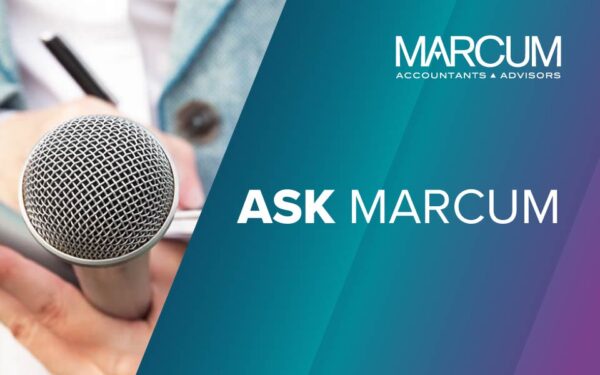Tax Consequences of Using Simple Agreements for Future Equity (SAFEs) in Venture Deals
By Leo Berg, CPA, Tax Manager, Alternative Investment Group
There is a relatively new way that startups and early-stage companies are raising capital. A simple agreement for future equity (SAFE) is a contract between an investor and a portfolio company that provides rights to the investor for future equity in the company. It does this without determining a specific price per share when the investment is made. Startups and early-stage companies often use SAFEs because they provide capital quickly without requiring the company to determine a valuation or set a share price. This allows the company to focus on business operations instead of prolonged financing negotiations. SAFEs allow startups to delay establishing an official valuation until a future funding event like a priced equity round. This benefits these investors since valuations tend to increase as company milestones are met.
Tax Consequences of SAFE Investments
There are three main ways to classify a SAFE when it comes to taxes. They are either: (1) debt, (2) an equity derivative, like a forward, or (3) an equity ownership. To determine the classification that applies to a particular SAFE instrument, one must look at the facts and circumstances of the specific situation.
First, SAFEs are usually not debt because they don’t have the economics that loans typically have, namely, a promise to pay back and an interest rate. In addition, with a SAFE, you can get more share ownership if the company does well. Further, if the company goes bankrupt, SAFE holders do not have a senior claim that debt holders would benefit from.
Second, it is important to note that holding SAFEs are not the same as owning part of the company. Even though SAFEs give the holder some rights if the company shuts down, they often don’t provide other rights that an owner would have, such as voting rights, the right to dividends, and the right to share in profits or losses.
Below we discuss the two most likely treatments for tax purposes upon the issuance of SAFEs.
SAFEs treated a forward contract
In many cases, it makes sense to treat a SAFE as a contract that lets you buy part of the company later – a forward contract. You pay now for a future right and get shares later when a transaction occurs, such as a qualified financing or liquidity event. The number of shares you receive depends on the company’s valuation at that time. This is especially true for pre-money SAFEs, where you agree on a price upfront and are then issued shares later based on how the company is valued when a triggering event occurs.
In the context of being treated as a forward contract, for a ‘variable prepaid forward contract’ tax treatment, there are no immediate tax consequences for the company or the investor when initially issuing a SAFE. The SAFE is not considered an equity issuance or ownership in the company. Proceeds from investors are simply considered a liability on the company’s balance sheet, and there is no taxable event at this stage. Rev. Rul. 78-182, 1978-1 C.B. 265. Furthermore, the later issuance of shares to fulfill the SAFE contract is also tax-free. Section 1032(a). See Chief Counsel Advice Memorandum 201025047 (3/22/2010). The downside of this treatment is that the holding period of the investors’ equity interest would be delayed until conversion on the triggering date.
SAFEs treated as equity
An alternative tax treatment would be to treat the SAFE as an equity grant, owning part of the company (shares of stock) for tax purposes. This is more likely for post-money SAFEs than pre-money SAFEs because a post-money SAFE provides more certainty regarding the ultimate ownership percentage in the company that the investor will get.
The more certain (based on the current economics of the company) that the SAFE would turn into shares of the company, the better the case for treating the SAFE as equity of the company. For example, if you purchase the SAFE when the company is about to raise more money (and so your SAFE will turn into shares imminently), it’s more like you received equity shares right away than if you were holding a forward contract.
If you pay for the SAFE and treat it as equity of the company, then the capital gain holding period will begin the day you bought the SAFE, which can result in a tax benefit depending on when there is a realization event for the shares.
Forward contract vs. stock- which treatment is more appropriate? Consider the following:
- What is the likelihood that the SAFE will convert to shares? When you sign the SAFE, will there be an upcoming transaction that converts the SAFE turn into shares? For example, if there is already a plan, pending deal, or a serious talk to raise more money, sell the company, or another event that triggers the SAFE conversion, then it’s more likely that your SAFE holdings will convert to shares and, therefore, treating the SAFE as equity may be more appropriate.
- Do you have any control over the company? Do you have any voting rights or power to choose who runs the company or makes decisions? Do you have any insight into the number of shares you will be issued? If you already know how many shares you will get when you buy the SAFE, then it’s more like stock. If you do not know and it depends on how much the company is worth when there is a future transaction, then it is more like a forward contract. However, if you have some advantages in receiving more shares (like a discount or a cap), and you will likely get shares, then treating the SAFE as equity may be more appropriate.
SAFEs were designed to be easy documents to understand and are intended to be used for fundraising quickly. However, the tricky parts might show up after you purchase the SAFE. It is important to evaluate the tax consequences of being treated as a forward contract or an equity grant before issuance. This may not be possible in every situation. If a SAFE is not treated as a piece of the company right away, you are putting off the time you need to start counting for long-term capital gains and qualified small business stock ‘QSBS’ treatment, which could mean foregoing big tax savings depending on the timing of a future sale.
SAFEs: Streamlining Startup Finance
SAFEs fill a unique role in startup finance. They enable young companies to obtain growth capital efficiently without undergoing full-priced rounds until necessary. SAFEs simplify and speed up fundraising for high-potential companies and enable companies to secure funds faster, allowing them to advance their business before stage-appropriate valuations are determined. When the time comes for conversion, accurate cap table management and financial modeling are key to implementing SAFE conversions smoothly. With the right tools and planning, companies can leverage SAFEs effectively in the early stages.
For investors, SAFEs provide access to high-growth startups along with future discount and cap advantages. Further, the simplified process saves legal time and costs associated with a priced round. Using SAFE agreements, both startups and investors can execute deals quicker. However, the classification of SAFEs upon issuance is important when it comes to tax reporting, as there can be substantial tax ramifications depending on how the instrument is classified- derivative vs equity.
Given the complexity of transactions involving SAFE’s, Marcum’s team of professionals is available to assist with respect to the accounting and tax implications of these transactions.




















